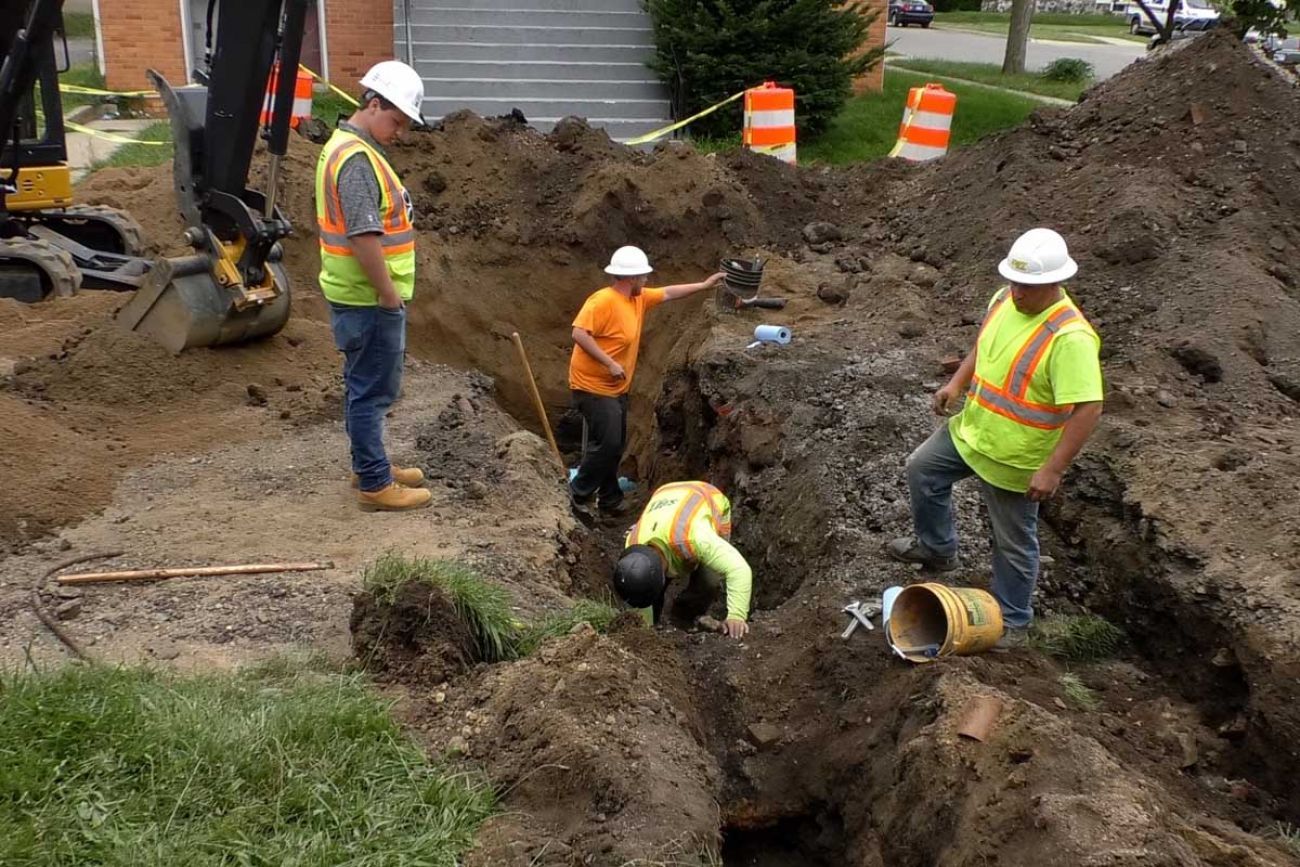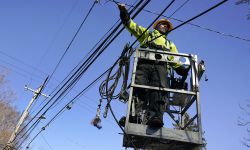Fun for Michigan governments: How to spend $11 billion in federal stimulus

May 20: Whitmer, Michigan GOP make peace, will negotiate billions in federal stimulus
LANSING — The White House is asking officials to think big as it sends nearly $11 billion dollars in federal stimulus funds to the state and local governments, including $885 million in additional funding Michigan had not expected.
The U.S. Treasury this week unveiled final allocations for some of the $350 billion it will provide to state, local, territorial and tribal governments nationally through the American Rescue Plan designed to speed up the national recovery from the COVID-19 pandemic.
In Michigan, the state government is set to receive $6.5 billion that can be spent through 2024 on health care, certain infrastructure projects, essential worker pay, business assistance programs and more.
That’s up from an earlier congressional estimate of $5.7 billion because the Treasury used a formula that will send extra aid to states with higher numbers of unemployed residents.
“We don't know exactly which data the congressional estimates were based on, but we're happy to have additional funding to support Michigan,” state budget office spokesperson Kurt Weiss said Tuesday.
Michigan’s 83 counties will receive a collective $1.9 billion, and the state’s 49 largest cities will receive a combined $1.8 billion. Townships, villages and smaller cities are in line for a collective $644 million but won’t know their specific allocations until a later date, likely next week.
The funding will arrive in two waves: Half this month, and the other half next year.
“One thing is for sure: This is transformational if we execute these dollars correctly,” said Flint Mayor Sheldon Neeley, whose city is set to receive $94.7 million in stimulus funds — nearly twice as much as the city spends in its general fund budget each year.
Related:
- How Michigan communities can, and should, spend billions in Biden stimulus
- Child tax credits are expected to start arriving in July. Here’s what to know.
- COVID reveals Michigan’s internet broadband gap. Will take years to close.
Some Michigan cities will get significantly more funding than initially estimated by Congress because the Treasury used a community block grant formula that takes into account poverty rates and housing availability, in addition to population.
Pontiac, for instance, will receive $37.7 million, up from the $5.9 million initially estimated by Congress. That’s about $635 per person in a city of about 59,000 residents.
“That’s huge,” City Council President Kermit Williams told Bridge Michigan. “Just to put it in perspective, $37 million is bigger than our general fund operating budget for an entire year. If it’s leveraged the correct way, it could really be the jolt that our city has needed.”
State-appointed emergency managers ran Pontiac from 2009 to 2016 and sold off local assets in an effort to cut tens of millions in annual spending. The federal funding could help the city rebuild from that era of “austerity planning,” Williams said.
Pontiac is already working with the Boys and Girls Club to construct a new community center, and with the new federal stimulus funding, “I think we can build something state of the art for our kids and our seniors,” he said.
Ann Arbor, one of the state’s more affluent cities, also appears to have benefited from the new federal allocation formula. It will receive $24 million in stimulus funds (about $202 per person), more than double the $11.8 million Congress had initially estimated.
Flint will receive about $4.6 million less than initially projected, but it’s nearly $95 million allocation will still amount to more than $990 per resident. The city is conducting community “focus circles” to develop a priority spending list, Neeley told Bridge Michigan.
The aim is to “enhance quality of life” for residents, the mayor said.
Flint has some budget holes to fill as a result of the COVID-19 pandemic, but the city could also use the funding in areas like job training initiatives, public safety, blight elimination and homeowner property rehabilitation programs, Neeley said.
The new New Deal
Experts have compared the massive injection of federal funds to the “New Deal,” a series of public works programs in the 1930s that helped the country emerge from the Great Depression.
But the White House has cited a more recent precedent, saying the Biden administration tried to learn from “the mistakes of the Great Recession” from 2007 to 2009, “when state and local government budget cuts were a drag on GDP growth for 23 of the 26 quarters following the crisis.”
“The funds will provide these governments with the resources needed to help address challenges in returning Americans to work,” the White House said Monday.
Local government officials are poring over a new 151-page guidance document from the Treasury Department that spells out what they can — and can’t — spend the new stimulus funding on.
Broadband upgrades are allowed, for instance, while tax cuts and pension bailouts are not. It appears governments cannot use the stimulus funds for major new road construction projects, but they can use the money to replace road funding revenue they lost during the pandemic.
Given the complexity, “I’m guessing it’s gonna be a good week before we have a good handle on it,” said Chris Hackbarth, director of state and federal affairs for the Michigan Municipal League. “They were very explicit that they want these dollars to go towards actual investments or services, as opposed to things like debt service or administrative costs.”
In some communities, the immediate needs are clear.
Lansing will initially use the funding to replace lost revenue and avoid municipal layoffs, said Council President Peter Spadafore, noting his city took a “big hit” when income taxes and parking fees plummeted as state employees transitioned to remote work during the pandemic.
Lansing will receive $49.9 million in federal stimulus funding, and that may allow for future spending on infrastructure improvements and other one-time projects, Spadafore said. “But for now, that first tranche of money that's coming out is pretty much spoken for.”
Stalled state negotiations
Gov. Gretchen Whitmer has laid out broad priorities for using the state’s share of the federal funding, including grant programs for small business, investments in emerging technologies, clean water, broadband and public health systems.
But her administration has not yet had substantive negotiations with the Republican-led Legislature, which has sought to use the federal funding as leverage for policy concessions from the Democratic governor.
The House GOP last month unveiled its own plan to spend the new money, along with other federal aid left over from prior stimulus packages.
But some of those legislative spending proposals — including $350 million deposit into the state’s “rainy day” savings fund, $595 million to pay off the full Flint water crisis settlement and repayment of road bonding debts — may not be allowed under new federal guidance.
The Treasury guidance rule specifies that “fiscal recovery” funds cannot be used to pay down debt service, legal settlements or deposits into rainy day or financial reserve funds. The money also cannot be spent on tax cuts or to prop up struggling pensions.
Instead, state and local governments can use the funding across four broad categories:
- Public health: To pay for COVID-19 mitigation efforts including vaccination programs, medical expenses, behavioral health and to pay some public health and safety staff
- Economic recovery: To address “negative economic impacts caused by the public health emergency,” including assistance programs for workers, households, small business and specific industries
- Lost revenue: To make up for revenues lost during the pandemic, including gas tax and registration fees used to pay for road construction and repair. This includes projected revenue growth that did not materialize.
- Bonus pay: To provide extra pay to essential workers “who have borne and will bear the greatest health risks because of their service in critical infrastructure sectors.” This can include nursing home staff, health care workers, child care workers, teachers, school staff, grocery store and restaurant workers, janitors and truck drivers.
- Infrastructure: To pay for water, sewer and broadband infrastructure construction or improvements. The broadband funding is intended to target areas that lack consistent internet speed of 25 Mbps downloads and 3 Mbps upload.
“They were very explicit that they want these dollars to go towards actual investments or services, as opposed to things like debt service or administrative costs,” said Hackbarth of the Municipal League.
In a Monday evening conference call with local government officials, the Biden administration reiterated its belief that the nation’s recovery from the Great Recession was slowed by continued financial problems at the local level, Hackbarth recounted.
“So they really wanted to attack that.”
See what new members are saying about why they donated to Bridge Michigan:
- “In order for this information to be accurate and unbiased it must be underwritten by its readers, not by special interests.” - Larry S.
- “Not many other media sources report on the topics Bridge does.” - Susan B.
- “Your journalism is outstanding and rare these days.” - Mark S.
If you want to ensure the future of nonpartisan, nonprofit Michigan journalism, please become a member today. You, too, will be asked why you donated and maybe we'll feature your quote next time!




